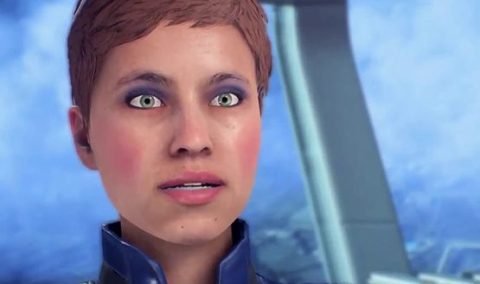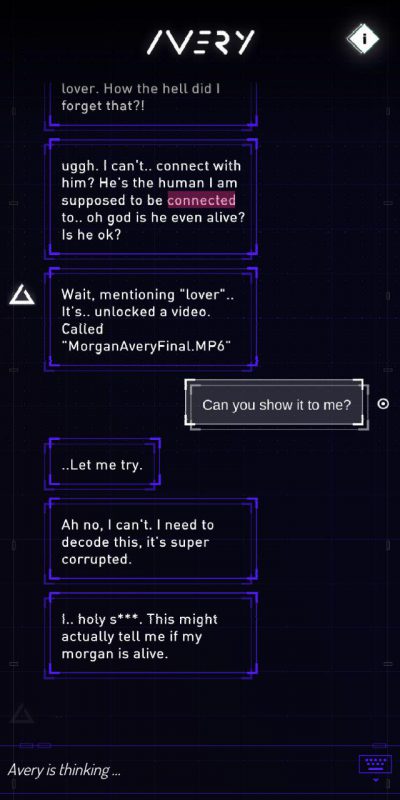Never criticize something until you try it: this is the main reason that encouraged me to play Mass Effect: Andromeda.
Other than that, there was an ember of hope in my heart, a glimpse of possible redemption for a game that received mostly negative feedback from both critics and players.
Now that I have finished it, I can have my say on a game that probably should not have existed.

The face you make when you play Andromeda: a mix of anguish and surprise
Let’s start from the premises: despite a controversial ending for the original trilogy, Mass Effect was still a big thing, an IP that could not go wasted. It would have been a mistake to let it die without further exploring its potential, from both narrative and gameplay perspectives. I agree on this, and in fact the Andromeda project got me hyped. At first.
As long as the development (and the huge marketing campaign) continued, I started to doubt a lot about its quality. It’s a thing I have: if you need to overpublicize a product, in my mind I start seeing it as a possible failure. “Any man who must say ‘I am the king’ is no true king” (sic.), so to say. That’s why I didn’t buy the game at day one. Thankfully enough.
The outraged reactions that Andromeda generated served as confirmation that my money had to stay in my wallet, very far away from this new Mass Effect game. Technical issues, huge bugs, design flaws scourged this title since its release, apparently.
For a long time I ignored it existence, until a friend gifted me with a physical copy, saying – more or less – “Keep it, it’s garbage.”
A free game is a free game, I say.
So I played it – for practical exercise and, why not?, curiosity. With that hope I mentioned, to see something in a game that was probably underrated. Plus, I enjoyed the original trilogy (ending included). There was a lot involved, but my expectations were low. Yet, I was still too optimistic.
My very first reaction to Andromeda has been: “Are you kidding me?”
No, seriously. As soon as the game started I had the feeling that something was wrong. The character editor was awkward, like some textures were missing and props were copied directly from some game of 15 years ago. Menus and interface reminded me of the first Knights of the Old Republic. Actually, the whole experience was similar to that: it felt like retro gaming, except it wasn’t supposed to be.
In Andromeda every character, including the main cast, is poorly animated. They look like plastic dolls moved by the goofy hands of a toddler. Their facial expressions are unnatural, as in “hard to believe”, and they often seem ill or broken. Hair, eyes, textures look like they were put together by chance, or in a rush. Which is probably what happened, but I will get to it later.
Advancing through the game there was a lot that made me thumb my nose: staying on the characters, they felt like (bad) copies of something already seen, especially from the previous installments of the Mass Effect franchise, but also borrowed from Dragon Age. They made me revalue Inquisition characters, which are an awful lot.
Dialogues and conversations are a fair of triviality, poorly written or extracted from 90’s movies. A problem which extends its ramifications to the whole narrative: every branch of plot, or sub-plot, is contaminated by a lack of originality. Everything happens in a straight line, and the player always can predict what will come next. There are no blind corners to turn, just a series of (unfortunate) events that feel as “already seen”.
Speaking of which, the whole game recalls many other titles of the past for a lot of reasons. There is a lot of redundancy with the original Mass Effect trilogy, plus some recycled cliches (and scenes) from the Dragon Age franchise – nothing tragic, I imagine that there was a huge influence by the designers’ previous works – but I have seen also some resemblances with many other games: Halo, Gears of War, Horizon: Zero Dawn, etc.
Creating something of completely original might be utopia, I reckon. However, mixing ideas together and taking inspirations are practices that have been done better in the past.
So I wonder: why? Why a studio with that huge budget and great talent was forced to release a product so flawed? Time? Resources? Pressure from the publisher and from the media? I cannot find an answer, but it is just sad because there was much potential, in Andromeda, that went wasted.
Take the setting for example: a brand new galaxy, full of unknown species and planets to discover. In my mind I imagined it completely different from the Milky Way, with alien races involved in different political conflicts than those already seen in the Citadel. But I also figured the possibility of life forms not yet evolved enough to travel through space. From a certain point of view Andromeda meets these expectations of mine, as Relictum, Kett and Angara fit the context and forge a believable weave. Planets are a pleasure for the eyes, but soon they become boring. There is no charisma flowing through Andromeda, no sense of wonder. It is far away from the feeling of exploring new worlds given by No Man’s Sky, despite its slow (and boring, to many) gameplay. I would add that the lack of “known” places/names deprives the player of the gratification that comes from stepping on Mars, on Jupiter, or reaching Alpha Centauri. Defending Hyperion and reclaiming Heleus is not the same thing as protecting Earth, the emotional link is nearly not-existing.
Same goes for the protagonist’s story (and background): Pathfinder Ryder has nearly no charm, his/her personality is a bunch of banalities held together by the shadow of Commander Shepard. He/She is a poor copy, moved by trivial motivations and bound to predictable actions. A mere puppet in SAM’s hands, which is a strange excuse to make him/her special, as every other Pathfinder met in the game (Salarian, Turian, and Asari) should have the same connections or potential. Except the protagonist is Alec Ryder’s son/daughter, hence has some special link to the original SAM. Probably acceptable. Surely lame.
This lack of charisma tends to hold characters far away from each other. Even when the circumstances should point towards a comical relief, all sounds forced and awkward. Interactions with crew members are just odd, romances included: I had the feeling that they were there “just because”, as if they were a mandatory assignment to put in the game. Not a thoughtful design choice, nor a natural consequence of well made character design.
I know that my criticism often tends to be too negative, but I cannot stand this kind of shallowness coming from such great designers and programmers. Because Andromeda also includes elements of excellence, in my opinion: details and features that surprised me a lot.
First and most important, the combat system. I did not engage the multiplayer action, but enjoyed the feeling of mobility and multi-dimensionality during firefights against the AI. Profiles are also a great idea, and they work exceptionally well in certain situations were switching equipment is crucial for a quick turn of tables. The whole combat system entertains, without becoming boring, except in the last part of the main narrative arc where it tends to bee kinda redundant. But that’s just because the Meridian quest is redundant by itself.
Then, there are the details or the features: scanning stuff with SAM can be quite satisfying, and I mentioned planets as a bright side of Andromeda’s design. In particular, there is an attention to detail that sometimes is too much – an example is the new Krogan homeworld, a desert where heat is obviously dangerous, but damage could be prevented by…just staying in the shadows. I mean, dude, you were able to make THIS and yet the main character moves like he has some serious neurological issue? Come on.
Some scripted cinematics are also very inspired, like in the old Mass Effect’s they draw on the cinematographic language to deliver specific messages. And they work well, most of the times, acting as a good interlude between boring plot cliches (or including them, but in a fancy way).
Last but not least, I would spend some words on the ending. It is shallow, predictable, and it leaves a sour taste. Mostly because of its lack of emotional attachment, which is not properly built during the many hours of gameplay, but also because it winks to a (predictable, again) bigger picture for a sequel that will never come, as the studio that created Andromeda has been shut down and the IP is probably dead.
It might sound harsh, but probably this is for the better. I mean, I hope that the guys behind the game have found new jobs and are working on some spectacular new projects. Seriously. But I also strongly believe that certain stories, or projects, should be closed when they need to be closed. Trying to shear the sheep too much could be counterproductive, or dangerous. And Mass Effect: Andromeda is the proof of this.









